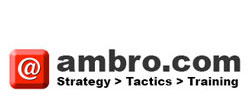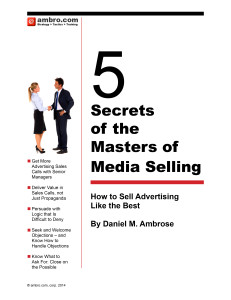Soooo many times, it has been said that content is king. But how content is delivered, and how it’s bundled, is equally important. A king without an army is a very weak ruler, if ruling at all. The army around king-content is the tactical execution that distributes it, delivers it, and monetizes it. Those tactics require an army of expertise, digital warriors who understand how to use the latest weapons.
Consider newspapers, once the king of content. Their circulation was paid for, and they could boast the sum of their subscribers nationally to be far greater than the sum of all the magazines in the country. Their audiences were measured to be bigger than the sum of all the 4 or even 6 local television channels added together at any given time in their market. They were a bundle of content, that fit the economics of creation, distribution and monetization, and they employed an army of closely-managed printers and distributors executing daily on detailed plans with sophisticated skills, as well as sales people.
Now consider the announcement that The Athletic, a subscription-only, advertising-free network of local sports coverage has reached 500,000 paid subscribers in only a few years. That is roughly 66% greater than the number reported a year before, which would put them over 1.3 million in only 2 more years. At the moment, they are operating in 47 markets, which puts them averaging more than 10,000 paid subscribers per market.
 Here is the key observation about king-content: The Athletic’s core strategy is to hire the best sports writers from newspapers. Most of them were local star journalists primarily covering an NBA or NFL or other pro-sports team. When they can’t fill a local spot locally, The Athletic will hire a star sports writer from elsewhere where management doesn’t understand their value, or can’t execute the tactics to earn their value. The Athletic will deploy them in another market and make money.
Here is the key observation about king-content: The Athletic’s core strategy is to hire the best sports writers from newspapers. Most of them were local star journalists primarily covering an NBA or NFL or other pro-sports team. When they can’t fill a local spot locally, The Athletic will hire a star sports writer from elsewhere where management doesn’t understand their value, or can’t execute the tactics to earn their value. The Athletic will deploy them in another market and make money.
The latest example is Austin Meek, the sports columnist from my home town newspaper the Eugene (Oregon) Register Guard. Austin had been offering observations and commentary on the University of Oregon Ducks, and generally on Track Town USA for some years. Very popular. If you are wondering if he’s any good, here is what he wrote from a truck stop on his way to Ann Arbor, where he’ll be covering the University of Michigan sports teams for The Athletic. Evidently he won’t be replaced by the — now Gatehouse owned — newspaper because they don’t know what he is worth, nor how to earn money on his journalism.
The newspaper content-bundle is defunct. What is the newspaper bundle? It’s the content strategy for a combination of local stories, national wire-service stories and comics, a mishmash of syndicated columns, and a batch of coupons and advertisements for frequently purchased items, a personal advice column, etc, etc.
One of the reasons why newspaper economics doesn’t work now is because the value a print subscriber paid for, including everything from the cross-word puzzle to the syndicated editorials, isn’t part of the online package or is available elsewhere free. Readers can read the syndicated content, often a day earlier, elsewhere. The unique content of a local newspaper is a small minority of what they print. And subscribers generally didn’t want it all anyway. Some wanted the local sports, others the community theater review, the local business coverage, still others the city council meeting coverage. These things are being disaggregated.
The Athletic is just one company building a national network of high quality local content around a single subject. American City Business Journals is doing another version of the same idea in about 40 cities. They didn’t start from scratch like The Athletic, but they are in a position to sell a subscription, attracted by local coverage, that gives access to content about matters in other markets. The in-depth coverage they give Nike in their Portland, Oregon market matters to the business community in Baltimore, home of Under Armour, and to the executives at Foot Locker in NYC who need to know everything about their biggest supplier.
I foresee a significant shift in local content from the something-for-everyone, advertising-paid-for bundle in newspapers of old, to a subscription-driven content business offering local public-affairs content to the movers and shakers in each local market, delivered on a tech platform that works for thousands of localities across the country. Such a subscription-driven content package could be produced by a handful of reporters and locally-most-respected opinionists, with no need for expensive printing and distribution infrastructure, thriving on a much lower number of subscribers than a newspaper. Probably only between 10% and 20% of the newspaper subscribers in any market value the in-depth public affairs coverage. But those people need and value it and will pay more than a cup of coffee for it.
Content is still king, but local content kings need a new army. We are seeing this new army formed with hundreds of local one and two person startups, now represented by LION, the organization for local, independent, online news publishers. With more than 250 members in 47 states, we are starting to see the emergence of this guerrilla army that will become armed with tech solutions that work across many markets providing ammunition for each market.
More background here on who pays for local online subscriptions.


Great article! Publishing has evolved so much and publishers need to rethink their role and think about the different ways to build a relationship with an audience (local content, subscriber model, podcasts etc).
Thank you Trevor.